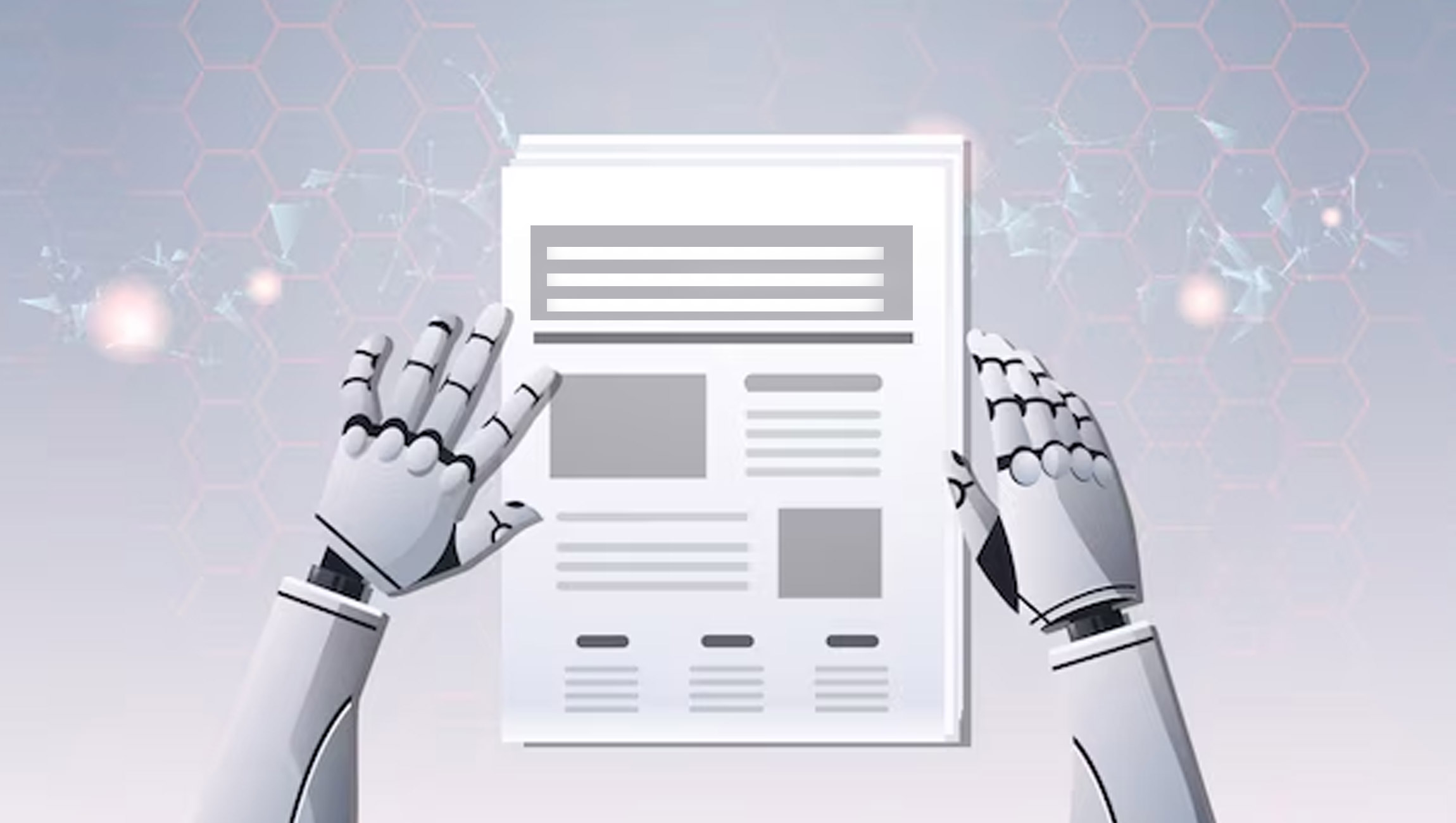In the ever-evolving landscape of news reporting, technological advancements continue to reshape the way we consume information. So, are you planning to revolutionize your live streams with AI technology? Imagine an AI host with human-like features but no pulse is doing the job of a human reporter, news anchors and more.
For the browsers, many businesses have produced interactive live streaming. It makes it possible to deploy AI hosts to improve the live show experience. Regardless of your sector, an AI host delivers a polished performance and immediately picks up on the show’s context.
The AI host is in charge of introducing your quiz, providing multiple-choice questions, talking about the subject as users react, declaring winners for each round, and interacting with players in real-time. You won’t need to be on camera since the AI host will deliver an entertaining, delightful, and up-to-date live show on their own.
Whether you are a tiny bar owner who loves hosting quizzes in his or her establishment, an influencer pushing a product, or an educational institution, many businesses cater to different sectors. Consequently, all of your demands are met.
AI News Host:
A few tech innovators and AI enthusiasts have even gone so far as to develop AI robots that assist in streaming live news. They engage in numerous activities.
An artificial intelligence-based system or computer created to play the part of a news anchor or presenter is known as an AI news host. Here are some common duties and capabilities that an AI news anchor can carry out:
1. News Presentation:
Much like a human news presenter, an AI news host can present news updates, reports, or other programmed content. It turns textual news articles into spoken sentences using text-to-speech synthesis algorithms.
2. Voice and Appearance:
To improve the visual part of the presentation, AI news anchors can replicate human-like voices and even have virtual avatars or graphical representations. Viewers’ experiences become more interesting and relatable as a result.
3. News Delivery:
They are capable of reading news stories, compiling information, and clearly and coherently presenting it to an audience. This could be delivering breaking news, sharing headlines, making commentary on various subjects or offering insight.
4. Analyze Natural Language:
Artificial intelligence (AI) news anchors are able to comprehend and analyze natural language, which enables them to respond to user inquiries or have interactive conversations with viewers. On the basis of pre-programmed information or having access to real-time data sources, certain AI hosts can even produce responses.
5. Personalization:
Depending on the capabilities of the AI system, news anchors can be tailored to fit various situations. For example, they could change their tone, presentation format, or style to fit different news genres or target audiences.
It’s vital to remember that the particular features and skills of AI news anchors can change based on the system or platform being used. While some AI news anchors may specialize in providing news material through a synthesized voice, others may include more sophisticated features like facial expression recognition, gesture recognition, or real-time data integration.
Marketing Technology News: MarTech Interview with Jennifer Griffin Smith, Chief Market Officer at Acquia
Latest AI News Hosts:
Here are just a few examples of the most recent AI news anchors, which demonstrate the developments in AI technology and how it is used in the sphere of broadcast media.
Some of the latest AI news hosts are mentioned below:
1. Erica
A noteworthy innovation in news reporting was the plan to have a Japanese robot named “Erica” host a news program. Hiroshi Ishiguro, the head of Osaka University’s Intelligent Robotics Laboratory, designed the robot. Erica has a voice that has been dubbed to sound like a 23-year-old, and she is created to resemble a young lady reporter.
The skills Erica possessed were pretty intriguing. First of all, Erica has the ability to analyze sound based on its origin and interactions with people. As a result of an enhanced voice synthesis technology, the robot can now differentiate between various noises in a discussion utilizing audio processing. Second, Erica includes 15 infrared sensors that allow it to use object detection techniques to monitor movement around it.
Four years ago, Hiroshi Ishiguro attempted to get Erica on the air but ran into difficulties. Since then, he asserts that he has programmed the machine to acquire its own awareness and says that Erica has a “soul” and experiences emotions similar to those of a real person. This assertion has provoked discussions concerning the metaphysical implications and controversy.
Attempts to bring Erica on the air by Hiroshi Ishiguro four years ago met with resistance. Since then, he asserts that he has programmed the device to acquire its own awareness and says that Erica has a “soul” and experiences emotions similar to those of a real person. Concerning the metaphysical elements of artificial intelligence, this assertion has provoked discussion and disagreement.
This development has significant implications for journalism. While Erica now serves as a news anchor, it is possible that its capabilities will one day include gathering and compiling news. It will be interesting to see how robots like Erica affect human employment like reporters on the ground or questioners at press conferences.
2. Xin Xiaomeng
Another AI host is created by a Chinese state news agency Xin Xiaomeng which is an AI news anchor.
Therefore, it is clear that China has made incredible strides in the field of AI-driven journalism, particularly in the context of the state-run news organization Xinhua. The first female AI news anchor in the world, Xin Xiaomeng, was unveiled by Xinhua and search engine Sogou. She is equipped with the ability to read news and behave like a human newscaster. This comes after Qiu Hao, the first male AI news anchor in the world, made his debut at China’s annual World Internet Conference.
An enhanced male anchor named Xin Xiaohao, created by Xinhua and Sogou, can stand up, make gestures, and move his mouth more naturally. These initiatives show China’s efforts to research and apply artificial intelligence (AI) to news reporting.
This outcome was the product of numerous earlier experiments by Xinhua with AI-driven journalism, such as the usage of a robot reporter named Jia Jia in 2017. The robot, however, had trouble answering naturally, frequently taking a few seconds to respond and giving brief, occasionally incomprehensible responses.
Additionally, a 1.2-meter tall robot dubbed “Inspire” who worked as an intern reporter for Xinhua in 2017 during the Two Sessions conferences. According to Xinhua, these AI-driven “new employees” have been productive since their introduction, publishing thousands of reports and demonstrating excitement for their jobs.
We can see that China’s efforts to integrate AI technology, such as robot reporters and AI news anchors, into its news media environment are ongoing. I hope they’ll provide AI hosts in the near future that are better and have more features.
3. Will McAvoy
The emergence of virtual news anchors, with Will McAvoy in the vanguard, is one such innovation. Will McAvoy is a virtual news anchor created by the South Korean business MoneyBrain to provide news in a strikingly lifelike manner? Will McAvoy add a new degree of realism to the field of news reporting by utilizing facial recognition and natural language processing technology?
Well, the development in producing virtual news anchors who closely resemble their human counterparts is best demonstrated by Will McAvoy. A virtual anchor that can present news with expressions and speech similar to humans has been made possible thanks to MoneyBrain’s commitment to creating cutting-edge technologies. This innovation opens up a wide range of opportunities for news reporting in the future.
Natural language processing (NLP) is the foundation of Will McAvoy’s abilities. The virtual news anchor can comprehend and analyze human language thanks to this sophisticated technology, enabling the broadcast of news items without interruption. Will McAvoy can translate complex content using NLP and present it in a comprehensible and interesting way, improving the news-watching experience for the audience.
The use of facial recognition technology is one of Will McAvoy’s most distinctive characteristics. As a result, the virtual news anchor can mimic human-like expressions that accurately indicate the nuanced nature of actual anchors’ emotions. Will McAvoy strengthens the connection with viewers by adding an added layer of authenticity to the news delivery by observing facial clues and gestures. Audiences have been enthralled by Will McAvoy’s lifelike appearance and natural delivery, which has generated discussions about the future of news reporting.
The field of news reporting benefits from the introduction of virtual news anchors like Will McAvoy in a number of ways. The first benefit is that these virtual anchors can work nonstop, providing news updates around-the-clock without the need for rest or breaks. In doing so, viewers are guaranteed a steady stream of information, improving accessibility and timeliness. A global audience may be served by easily localizing and adapting virtual news anchors to multiple languages and places.
The virtual news anchor created by MoneyBrain, Will McAvoy, marks a significant advancement in the field of news reporting. Will McAvoy blurs the distinction between actual news anchors and computer-generated ones with his lifelike delivery, which is made possible by facial recognition and natural language processing technologies. We may anticipate more advancements in news presentation as this technology develops, which will completely change how we consume information.
4. AI Anchors at Xinhua
Artificial intelligence (AI) is transforming several industries, including news reporting, in an era of technological developments. The Chinese government-run news organization Xinhua has embraced this wave of innovation by
These AI anchors are revolutionizing the way news is presented, with Qiu Hao specializing in financial news and Zhang Zhao in sports. The AI anchors at Xinhua are giving news reporting a new dimension by using lifelike avatars and computer-generated voices.
5. Providing Financial Insights, Qiu Hao
One of Xinhua’s AI news anchors, Qiu Hao, has established a solid reputation in the field of financial news reporting. Qiu Hao offers accurate and precise financial updates and analysis thanks to its powerful algorithms and cutting-edge AI technology. This AI anchor connects viewers with interesting and approachable insights into the world of finance through realistic avatars and computer-generated voices.
6. Zhang Zhao, an expert in sports
Zhang Zhao, an AI news anchor who specializes in sports in addition to financial news, has also been unveiled by Xinhua. With every report, Zhang Zhao enthuses the audience with the excitement and passion of the sporting world. This AI sports anchor provides breaking news updates, game highlights, and intelligent analysis using lifelike avatars and computer-generated voices. Zhang Zhao gives a thorough view of the sports sector using a large collection of sports data, which improves the viewing experience.
7. Realistic Avatars and Computer-Generated vocals
Xinhua’s AI anchors make use of the power of realistic avatars and computer-generated vocals to produce an immersive news experience both aesthetically and acoustically. In order to evoke a sense of familiarity and relatability, these avatars are made to closely resemble human anchors. The computer-generated voices offer news content in a clear, organic, and interesting way when combined with cutting-edge voice synthesis technology. Realistic avatars and computer-generated speech are combined to provide a seamless and engrossing watching experience.
An important development in the advancement of news reporting is the appearance of AI anchors at Xinhua. While AI anchors are not meant to completely replace human journalists, they do enhance productivity and broaden the scope of current news teams.
We ought to anticipate ever more sophisticated and human-like AI anchors as AI technology develops, further blurring the distinction between artificial and human news presenters. The use of AI to news reporting lays the path for a time in the future when human and artificial intelligence collaboration will change the field of media.
With their lifelike avatars and synthetic voices, Qiu Hao and Zhang Zhao, the AI anchors for Xinhua, have transformed the way news is presented. These AI anchors provide financial and sports news with accuracy, focus, and a kind demeanor.
We can anticipate more developments in news reporting as AI technology advances, which will help to shape the sector’s future. While AI anchors support the news reporting process, human journalists are still essential because they combine their own talents and viewpoints with the power of AI to provide audiences around the world with news that is both interesting and captivating.
Marketing Technology News: Unlocking the Power of A/B Testing in Email Marketing
Is there potential for AI hosts to take over broadcast media?
Although AI hosts have the ability to contribute to broadcast media, it is doubtful that they will take over the sector entirely. Even though artificial intelligence technology has made significant advances in recent years, some aspects of human communication and presentation may still be difficult for AI to accurately mimic.
The reliable and consistent delivery of news or other scripted programming can be implemented into AI hosts. In order to make a presentation more entertaining, they can mimic human-sounding voices, movements, and facial emotions. This can be helpful in some circumstances, like when giving clear news updates or giving weather reports.
There are a number of reasons, though, why AI hosts in broadcast media might not totally displace human hosts. Some of which are:
1. Emotions and Sincerity:
First and foremost, human hosts contribute a degree of sincerity, emotion, and interpersonal connection that artificial intelligence may have trouble credibly replicating. Human hosts are able to communicate empathy, humor, and adaptability, all of which are beneficial for interacting with an audience.
2. Capacity to reason:
In addition, human hosts are capable of critical thinking, impromptu responses, and spontaneous questioning. These characteristics are critical in live interviews, debates, and conversations since they require the capacity to adapt and react immediately.
3. Adding depth and credibility:
Human hosts frequently have a wealth of background information, experience, and competence in their particular industries. They can provide context, analysis, and insights to the news or other issues they discuss, which gives their presentation more depth and authority.
The AI news anchors that garnered immense popularity and established a strong presence on social media
By China’s state-run news organization, Xinhua News, we can observe the introduction of AI-powered news anchors. At the World Internet Conference in Zhejiang province, these AI anchors were unveiled. While physically resembling human anchors—dressed in suits and with a cool demeanor—the way they convey the news is notably different. The artificial anchors’ choppy pronunciation makes them sound less like a person than voice assistants like Siri or Alexa.
The AI anchors were created in partnership with Chinese search engine startup Sogou.com. They can operate continuously, 24 hours a day, and are taught through social media and live broadcasting footage. They can display simple human emotions and are based on actual Xinhua News journalists.
The AI anchors’ ability to duplicate themselves indefinitely enables them to cover stories in several places at once. While the introduction of AI anchors is intended to cut costs and increase efficiency, it also raises questions about the quality of information that the Chinese government is providing to its people, especially in light of the country’s limited press freedom and censored online environment.
It should be emphasized that Xinhua is primarily in charge of broadcasting official government news releases and viewpoints, which makes the use of robots to provide news relatively commensurate with its function. Given that Xinhua already acts as a platform for the government’s perspectives, the text notes that the absence of human touch with Xinhua’s AI anchors is unlikely to spark much criticism.
The incorporation of AI technology is considered as a part of ongoing innovation and adaptation to cutting-edge technologies from around the world, it is also highlighted. Chinese media has used AI technology before, such as when Dragon TV used a chatbot using AI to broadcast the weather in 2016. The English-speaking AI anchor for Xinhua has already been active on social media and has even appeared on Squawk Box on CNBC.
Final Thoughts:
Although AI hosts can sometimes supplement and help human hosts, it is unlikely that they will ever completely replace people. Broadcast media’s overall quality and appeal are boosted by the special combination of abilities, traits, and experiences that human hosts bring to the table. Instead of completely replacing human hosts, AI technology is more likely to be used as a tool to enhance and support the human broadcasters.
While virtual news anchors can’t entirely take the place of actual journalists, they do support current news teams by adding flexibility and scalability to the way news is delivered. Future presentations are likely to be increasingly more sophisticated and convincing as virtual news anchor technology develops.
Virtual news anchors are not a total substitute, but they unquestionably influence the journalism industry’s dynamic environment.
***The Primary Author of this piece is Sakshi John, a contractual writer for iTechSeries











